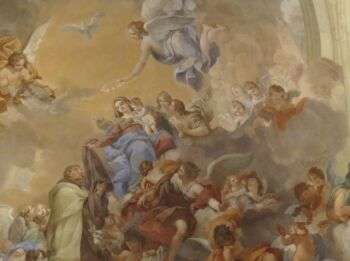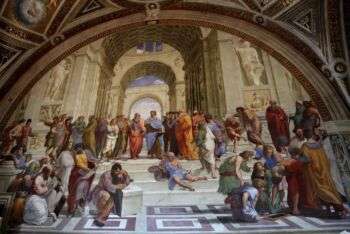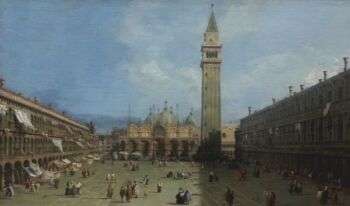Perspective is the technique of depicting spatial objects on any surface with changes in the outlines of form, and light-and-shade relations that are typically observed in nature.
Early History
For a millennium, the driving force for development of art was the presentation of Depth. For the first time in history, during the 5th Century BC, Plato uses perspective in the scenery for dramatic performances based on the plays of Aeschylus and Sophocles. No example of Greek perspective paintings has survived, but we can imagine the meaning of their technique based on an analysis of Roman copies (probably from Greek artists) from the ruins of Pompeii, in the first century AD.

Image source: https://commons.wikimedia.org
Greek and Roman artists skillfully depicted volumes and space in their frescoes, yet not based on a precise perspective construction. The artist used an intuitive understanding of the concept of convergence.

Image source: https://search.creativecommons.org/photos/03c42dfb-f29d-45eb-8444-5b5f93ea1f2e by Simone Ramella
Many artists abandoned the concepts of linear perspective in the 14th century. Among them are Cimabue, Giotto and the Lorenzetti brothers. Giotto realized the idea of convergent parallels without using an exact vanishing point.

Image source: https://search.creativecommons.org/photos/dea8f1c7-9252-4c38-8687-954f0ea77113 by Simone Ramella
There are oral accounts of Manetti (1480) and Vasari (1550) at the heart of the perspective history. Between 1405 and 1425, the Florentine architect Filippo Brunelleschi (1377-1446) analyzed them and demonstrated them to his colleagues in two dramatic peep shows.
Central Vanishing Point
The central vanishing point was likely used in 1423 for the first time by Masolino da Panicale (1383-c. 1440), in a painting that tells two separate stories: the healing of the crippled and the resurrection of Tabitha.

Image source: https://search.creativecommons.org/photos/ca30c3b6-011e-44ce-a0ad-bee9eaeb33e7 by Bradley N. Weber

Image source: https://search.creativecommons.org/photos/16690d2b-801b-4c25-b4a5-f0ffed28c84b by Jennifer Mei
After Masolino’s breakthrough, many Renaissance painters turned to the perspective construction of space in their compositions. In particular, Masaccio, Mantegna, Fra Angelico, and Leonardo implemented the technique. Additionally, the phenomenon peaked around 1500, evident by the famous works of Raphael.
In the 18th Century, a new driving force within art emerged: two-point perspective.

Image source: https://search.creativecommons.org/photos/22d96247-ac9f-4bf7-80bd-a3b59e5e3938 by leoncillo sabino
Perspective Types
To evaluate perspective accuracy, we need to have a clear understanding of the rules:
- One-point perspective: Drawings have one vanishing point. The objects are of parallel or perpendicular lines to the viewer’s line of sight, and these lines converge at the vanishing point.
- Two-point perspective: Drawings have two vanishing points. Within the illustration, these vanishing points are arbitrarily along the horizon. One point represents one set of parallel lines, another point represents another.
- Four Point Perspective: Also called infinity point of view, it is a curved version of two-point perspective. The four-point perspective image can represent a 360° panorama and even beyond 360° when presenting impossible scenes. It begins with the horizon line, followed by four equal vanishing points, denoting four vertical lines.
Info sources:
http://www.renaissanceconnection.org/lesson_art_perspective.html http://www.webexhibits.org/sciartperspective/tylerperspective.html https://en.wikipedia.org/wiki/Perspective_(graphical)
